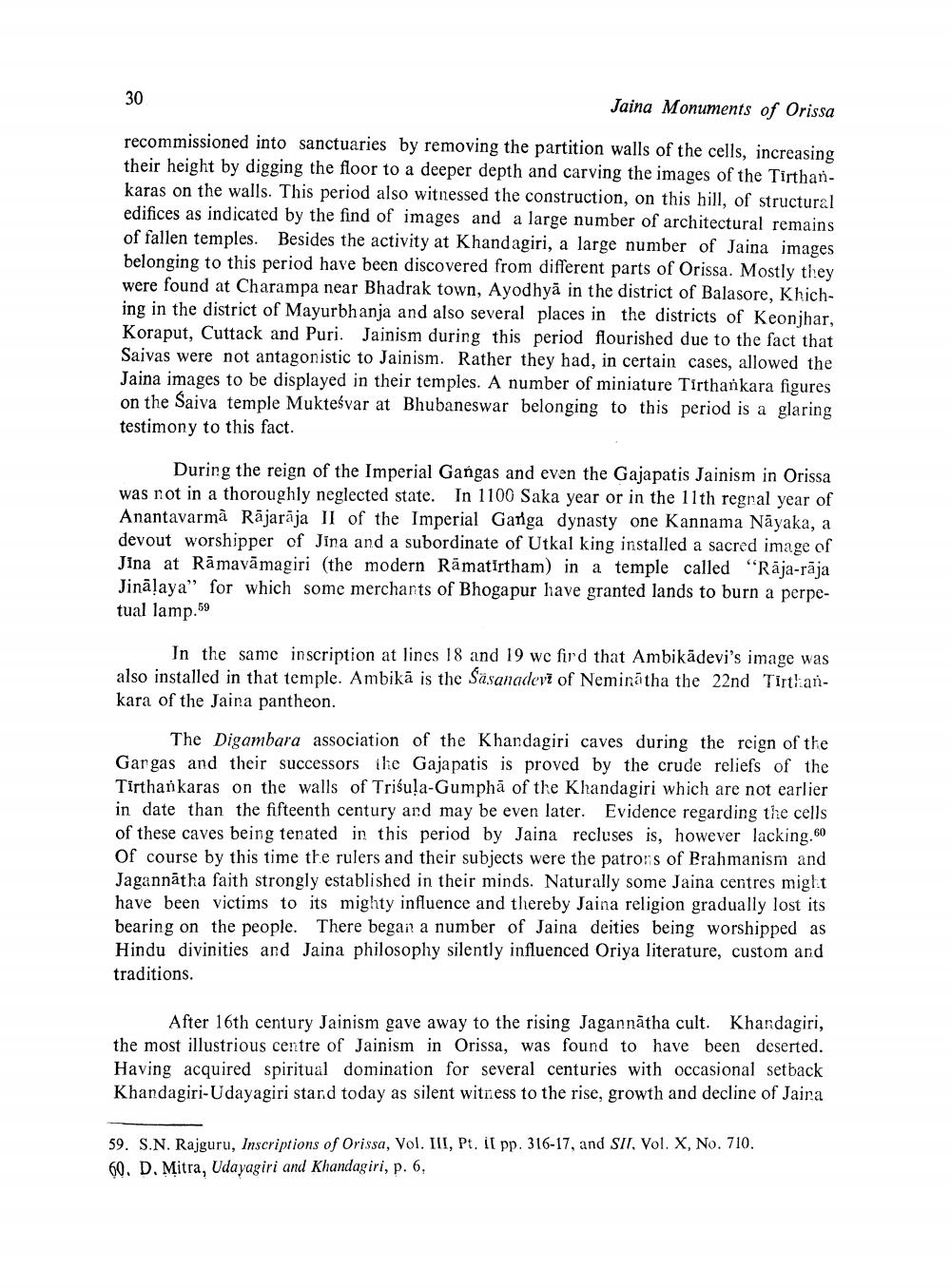________________
30
Jaina Monuments of Orissa
recommissioned into sanctuaries by removing the partition walls of the cells, increasing their height by digging the floor to a deeper depth and carving the images of the Tirthankaras on the walls. This period also witnessed the construction, on this hill, of structural edifices as indicated by the find of images and a large number of architectural remains of fallen temples. Besides the activity at Khandagiri, a large number of Jaina images belonging to this period have been discovered from different parts of Orissa. Mostly they were found at Charampa near Bhadrak town, Ayodhyā in the district of Balasore, Khiching in the district of Mayurbh anja and also several places in the districts of Keonjhar, Koraput, Cuttack and Puri. Jainism during this period flourished due to the fact that Saivas were not antagonistic to Jainism. Rather they had, in certain cases, allowed the Jaina images to be displayed in their temples. A number of miniature Tirthankara figures on the Saiva temple Mukteśvar at Bhubaneswar belonging to this period is a glaring testimony to this fact.
During the reign of the Imperial Gangas and even the Gajapatis Jainism in Orissa was not in a thoroughly neglected state. In 1100 Saka year or in the 11th regral year of Anantavarmā Rājarāja II of the Imperial Gariga dynasty one Kannama Nayaka, a devout worshipper of Jina and a subordinate of Utkal king installed a sacred image of Jina at Rāmavāmagiri (the modern Rāmatirtham) in a temple called "Rāja-rāja Jinālaya" for which some merchants of Bhogapur have granted lands to burn a perpetual lamp. 59
In the same inscription at lines 18 and 19 wc fird that Ambikādevi's image was also installed in that temple. Ambikā is the Sasanadevī of Neminātha the 22nd Tirthankara of the Jaina pantheon.
The Digambara association of the Khandagiri caves during the reign of the Gargas and their successors the Gaja patis is proved by the crude reliefs of the Tirthan karas on the walls of Trisula-Gumphā of the Khandagiri which are not earlier in date than the fifteenth century and may be even later. Evidence regarding the cells of these caves being tenated in this period by Jaina recluses is, however lacking.60 Of course by this time the rulers and their subjects were the patrons of Brahmanism and Jagannātha faith strongly established in their minds. Naturally some Jaina centres migl.t have been victims to its mighty influence and thereby Jaina religion gradually lost its bearing on the people. There began a number of Jaina deities being worshipped as Hindu divinities and Jaina philosophy silently influenced Oriya literature, custom and traditions.
After 16th century Jainism gave away to the rising Jagannatha cult. Khardagiri, the most illustrious centre of Jainism in Orissa, was found to have been deserted. Having acquired spiritual domination for several centuries with occasional setback Khandagiri-Udayagiri stard today as silent witness to the rise, growth and decline of Jaira
59. S.N. Rajguru, Inscriptions of Orissa, Vol. III, Pt. il pp. 316-17, and SII, Vol. X, No. 710. 60. D. Mitra, Udayagiri and Khandagiri, p. 6.




